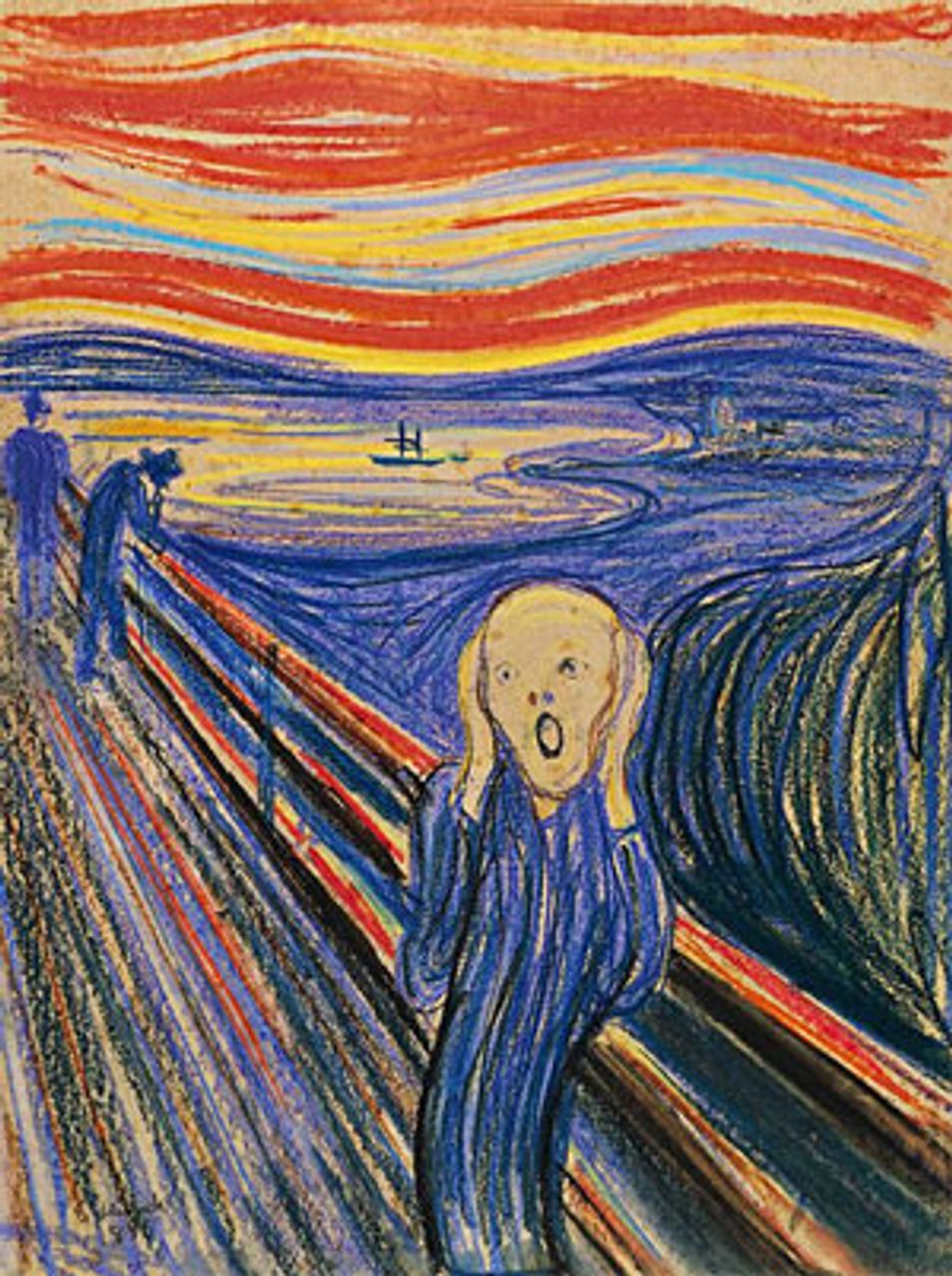 New York billionaire and hedge fund manager Leon Black was the anonymous winner of an auction in May for Edvard Munch’s 1895 pastel, The Scream, according to a report published Wednesday by the Wall Street Journal, which referred to unnamed sources close to the buyer. The piece was sold for $119.9 million, the largest ever sum at an auction.
New York billionaire and hedge fund manager Leon Black was the anonymous winner of an auction in May for Edvard Munch’s 1895 pastel, The Scream, according to a report published Wednesday by the Wall Street Journal, which referred to unnamed sources close to the buyer. The piece was sold for $119.9 million, the largest ever sum at an auction.
The sale is another indication that the financial elite in the US and internationally has recovered whatever losses it incurred following the 2008 economic crash, precipitated by its own criminal policies, and is finding ever more fantastic ways to spend its money.
The WSJ article, written by reporter Kelly Crow, noted: “Mr. Black is one of a handful of billionaires whose lavish art spending has transformed the international art market in recent years, fueling the proliferation of art fairs and ratcheting up prices for all sorts of artworks. His $750 million collection already includes drawings by Vincent van Gogh and Raphael, watercolors by J.M.W. Turner, cubist paintings by Pablo Picasso and ancient Chinese bronzes. Three years ago, Mr. Black paid Christie’s $47.6 million for a Raphael chalk drawing, ‘Head of a Muse,’ a record auction price at the time for a work on paper.”
With a personal wealth estimated at $3.4 billion, Black is the chairman of investment firm Apollo Global Management, which manages global assets worth $105 billion. According to Forbes, Apollo made billions in 2009 as a direct result of the economic crisis, investing in distressed debt and effectively betting on the Obama administration’s extension of handouts of trillions of dollars to cover the toxic investments of the elite.
Global art sales have continued to rise since they surpassed pre-crash levels in 2010. According to this year’s “Art Market trends report 2011” by artprice.com, “[A]rt in fact sold better in 2011 than at any other time in history with $11.57 billion in total global annual revenue, up $2 billion versus 2010, which already produced the best performance of the decade.”
It added: “In 2011, the high-end market displayed an extraordinary dynamism. No fewer than 1,675 artworks sold above the $1 million threshold (including 59 above the $10 million threshold) representing a 32 percent increase of 7-figure (or more) auction sales versus 2010 and an increase of 493 percent versus the start of the decade!”
The report noted that much of the growth has been fueled by the expanding layer of ultra-wealthy buyers in China, where sales jumped 49 percent compared to 2010. Increases in sales were also notable in Europe, where the bankers and their political representatives are imposing even more severe austerity measures on the working class through cuts to wages, pensions and other social entitlements, including health care and education. Auction sales were up 24 percent in the UK, 9 percent in France and 23 percent in Germany.
At the same time, access to culture and other social services is being slashed across the United States and internationally. Since the financial crash in 2008, local and state governments run by Democrats and Republicans alike have insisted that there is “no money” to sustain cultural and artistic centers for the working population. Spending on museums, orchestras and galleries has been reduced and employees forced to accept drastic pay cuts.
The large increases in art prices due to speculation has meant that museums and galleries are increasingly unable to purchase pieces or even meet the insurance rates for those they display.
The great Norwegian expressionist painter Edvard Munch (1863-1944) completed the pastel-on-board in 1895. It is one of four versions, all dated between 1893 and 1910, of the well-known image of a man clasping his head and opening his mouth to scream. The other three reside in galleries in Oslo.
It has been reported that Black may choose to donate The Scream to either of the two New York museums of which he is a board member, the Metropolitan Museum of Art and the Museum of Modern Art. In other words, as always with privately-owned art, whether or not the work is available to the public will be decided at the whim of a single individual.
Black earned his fortune between 1977 and 1990 as an executive for Drexel Burnham Lambert, specializing in leveraged buyouts and acquisitions. The profits extracted from these operations are most often the result of the closure or “restructuring” of targeted companies, through mass layoffs and cuts to workers’ pay and conditions.
In August last year, he hosted a multimillion-dollar party at his home in Long Island to celebrate his 60th birthday among 200 guests. The event reportedly featured a performance by Elton John, as well as a “seared fois gras station.” (See: “Billionaire throws party on Long Island—other billionaires (and hangers-on) attend”)
Accounts of the auction three months ago further underscore the chasm that separates the mass of the population from the gallerists, collectors, dealers, media reporters and other upper-middle class layers who attend such events and are deeply impressed by the sums of money involved.
WSJ reporter Crow told PBSNewswire in May: “I've got to tell you, there is such an adrenaline rush to the theater of the auction room when you can go in thinking that a painting could go for $40 million, $80 million, and it only takes a handful of billionaires really to ratchet it up upwards of $120 million.”
The Journal noted on Wednesday: When the bidding crossed the $100 million mark, an auction first, [auctioneer] Mr. Meyer adjusted his tuxedo jacket at his rostrum and said, ‘Can I say I love you?’ The hundreds of people packed into the house's York Avenue saleroom chuckled.”
